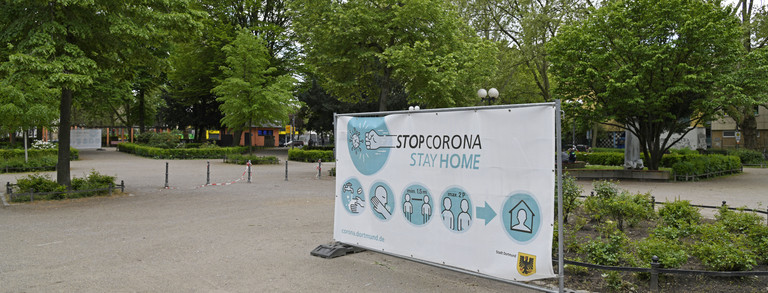The case study cities
In Germany, the first COVID-19 case was reported on January 27, 2020. In the following weeks, the number of infections in Germany and the rest of the world continued to rise. In March 2020, the then-chancellor Angela Merkel appealed to the population to avoid social contact and stay home as far as possible. During the first lockdown, schools and non-essential businesses had to close. The government imposed restrictions on social gatherings and travel, encouraged remote work, and promoted hygiene practices such as handwashing and mask-wearing. From June to mid-October 2020, the federal government decided to ease the measures. These included returning to schools, opening certain types of businesses and services, and ending strict social distancing. Incidence-based measures were introduced depending on the number of cases per 100.000 inhabitants in the respective municipalities. With a rising number of infections again in autumn and winter, a renewed lockdown was imposed from mid-October 2020 to March 2021, and in the spring and summer of 2021, measures were eased again based on incidence and individual vaccination status. In April 2023, over three years after the first lockdown, Federal Minister of Health Karl Lauterbach announced the end of all federal measures. Overall, Germany saw fluctuating infection rates with significant stress on the healthcare system, but the mortality rate was relatively lower compared to some other European countries, partially due to early and decisive action and widespread testing and vaccination campaigns.
As a federal state, the lockdown in Brazil was not a centralized national measure, but rather a series of coordinated actions between the different levels of government: federal, state and municipal. In the beginning of the COVID-19 pandemic, the federal government issued general guidelines, such as international travel restrictions and social isolation measures, through the Ministry of Health. However, the implementation of quarantine measures was mainly driven by state and municipal governments, which had the autonomy to establish their own policies by considering the local epidemiological situation and health system capacity. The Supreme Court ratified this autonomy in light of the federal government's refusal to adopt more restrictive measures. This resulted in a variety of approaches across the country, with some regions implementing stricter measures and others adopting more flexible strategies. In the specific case of the state of São Paulo, as of June 2020, the Plano São Paulo was implemented as an additional strategy for dealing with the pandemic developed by the state government. This plan established criteria for easing and relaxing social isolation measures, taking into account the epidemiological situation in each region of the state. As a strategic tool in the management of the COVID-19 crisis in São Paulo, it provided clear and transparent guidelines for decision-making and actions to deal with the pandemic. However, there are reservations about its effectiveness and the implications of using algorithms and data in decision-making during the COVID-19 pandemic. Brazil faced significant challenges with high infection and mortality rates, particularly in densely populated areas and among marginalized communities. The fragmented response and disparities in healthcare infrastructure exacerbated these outcomes.
South Africa implemented one of the strictest lockdown measures globally during the initial phase in response to the pandemic. South Africa had five alert levels of lockdown, with level one imposing the least stringent and level five the most severe restrictions: These alert levels were declared nationally, provincially, or in a district. As the pandemic progressed, measures were gradually adjusted following the number of infections, the health system capacity in a specified area to respond to the disease burden and other factors that would influence the level of infection, hospitalization, and mortality. The government imposed a nationwide lockdown that included restrictions on movement, closure of schools and non-essential businesses, and a ban on alcohol and tobacco sales. Additionally, the government implemented widespread contact tracing efforts to identify and isolate infected individuals. Schools, offices, and non-essential businesses were closed, and mobility within the city nearly came to a halt with strict curfew hours. The national state of disaster was lifted in April 2022. South Africa's response was marked by high compliance initially, but high-density living conditions in informal settlements make it difficult for people to self-isolate. Despite efforts to manage the pandemic through strict measures and extensive contact tracing, the country experienced high levels of infection and mortality, particularly affecting marginalized populations.



